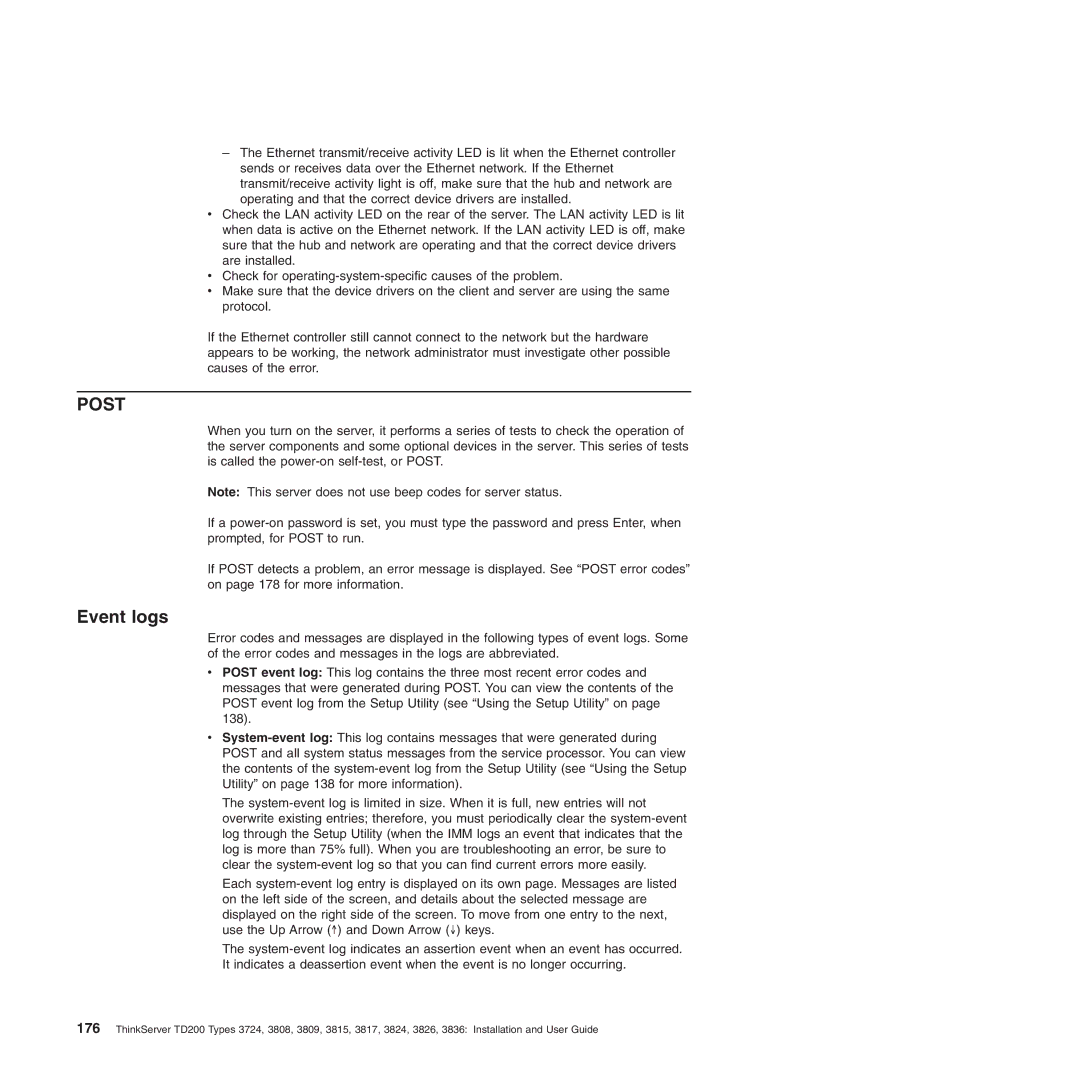–The Ethernet transmit/receive activity LED is lit when the Ethernet controller sends or receives data over the Ethernet network. If the Ethernet transmit/receive activity light is off, make sure that the hub and network are operating and that the correct device drivers are installed.
v Check the LAN activity LED on the rear of the server. The LAN activity LED is lit when data is active on the Ethernet network. If the LAN activity LED is off, make sure that the hub and network are operating and that the correct device drivers are installed.
vCheck for
vMake sure that the device drivers on the client and server are using the same protocol.
If the Ethernet controller still cannot connect to the network but the hardware appears to be working, the network administrator must investigate other possible causes of the error.
POST
When you turn on the server, it performs a series of tests to check the operation of the server components and some optional devices in the server. This series of tests is called the
Note: This server does not use beep codes for server status.
If a
If POST detects a problem, an error message is displayed. See “POST error codes” on page 178 for more information.
Event logs
Error codes and messages are displayed in the following types of event logs. Some of the error codes and messages in the logs are abbreviated.
vPOST event log: This log contains the three most recent error codes and messages that were generated during POST. You can view the contents of the POST event log from the Setup Utility (see “Using the Setup Utility” on page 138).
v
The
Each
The
176ThinkServer TD200 Types 3724, 3808, 3809, 3815, 3817, 3824, 3826, 3836: Installation and User Guide
